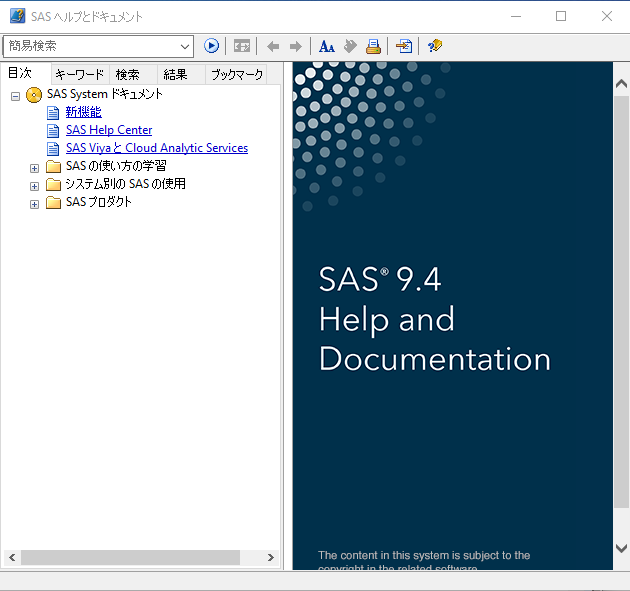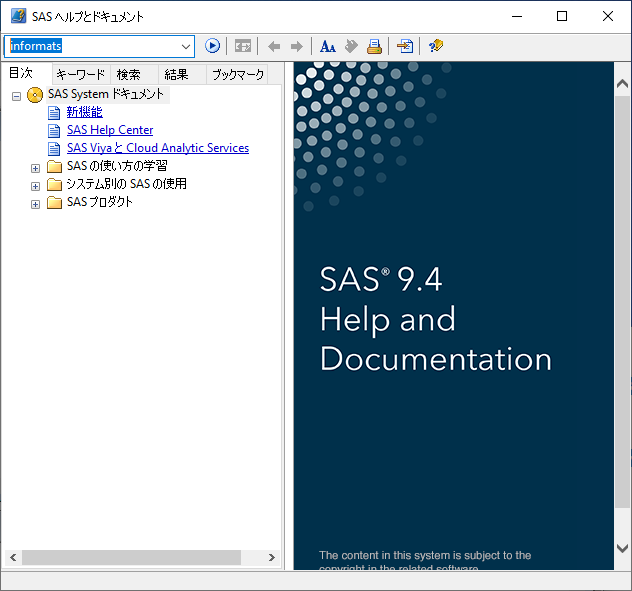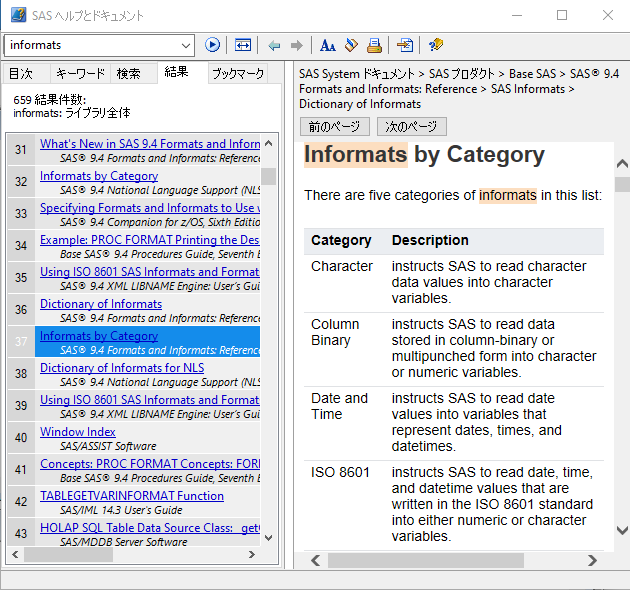Here's as good an opportunity as any to practice using the SAS Help feature that comes with SAS. Be forewarned that any information you could possibly need is in SAS Help — it's just that sometimes it takes some patience to find it.
Note that SAS has changed the interface and access of help files dramatically since 9.2. The contents shown below apply to SAS 9.3 and above.
In the previous section, we used two informats for reading nonstandard numeric data, namely MMDDYY8. and COMMA6. There are oodles of other informats available making it impossible to address them all in this course. To name just a few, there's PERCENTw.d, DATEw., TIMEw., and JULIANw. There's no doubt that at some point in your future SAS programming, you'll need to look up an informat in the SAS Help and Documentation. So, let's give you some practice with doing that now. Let's look for a list of the available SAS informats. To do so:
- On the menu toolbar, under Help, select SAS Help and Documentation:

- A new window pops out:

- In the box labeled Quick Search, type the word informats:

- Then click the arrow button next to it to start searching…
- Finally, under the relevant list that SAS displays, use your mouse to select item 36 labeled Informats by Category:

In the righthand portion of the window, you should see that the relevant content appears. It is titled Informats by Category. Page down and take a look at the (long) list of available SAS informats. For example, you should see one in the Character category called $CHARw. which SAS tells you that it is the informat you can use if you want to read in characters with blanks. You should also see one in the Character category called $w. which SAS tells you that it is the informat to use if you want to read in standard character data. Finally, you should see one in the Numeric category called w.d which SAS tells you that it is the informat to use if you want to read in standard numeric data.
I'll be the first person to agree with you that some of the SAS Help can be intimidating and not particularly clear on the first pass. On the other hand, it has been my experience that if you are patient with it, you can usually find a good example or two to help clarify sticking points. It is in your best interest to get comfortable with SAS Help, as no course (not even this one!) is going to teach you everything you need to know about SAS.
